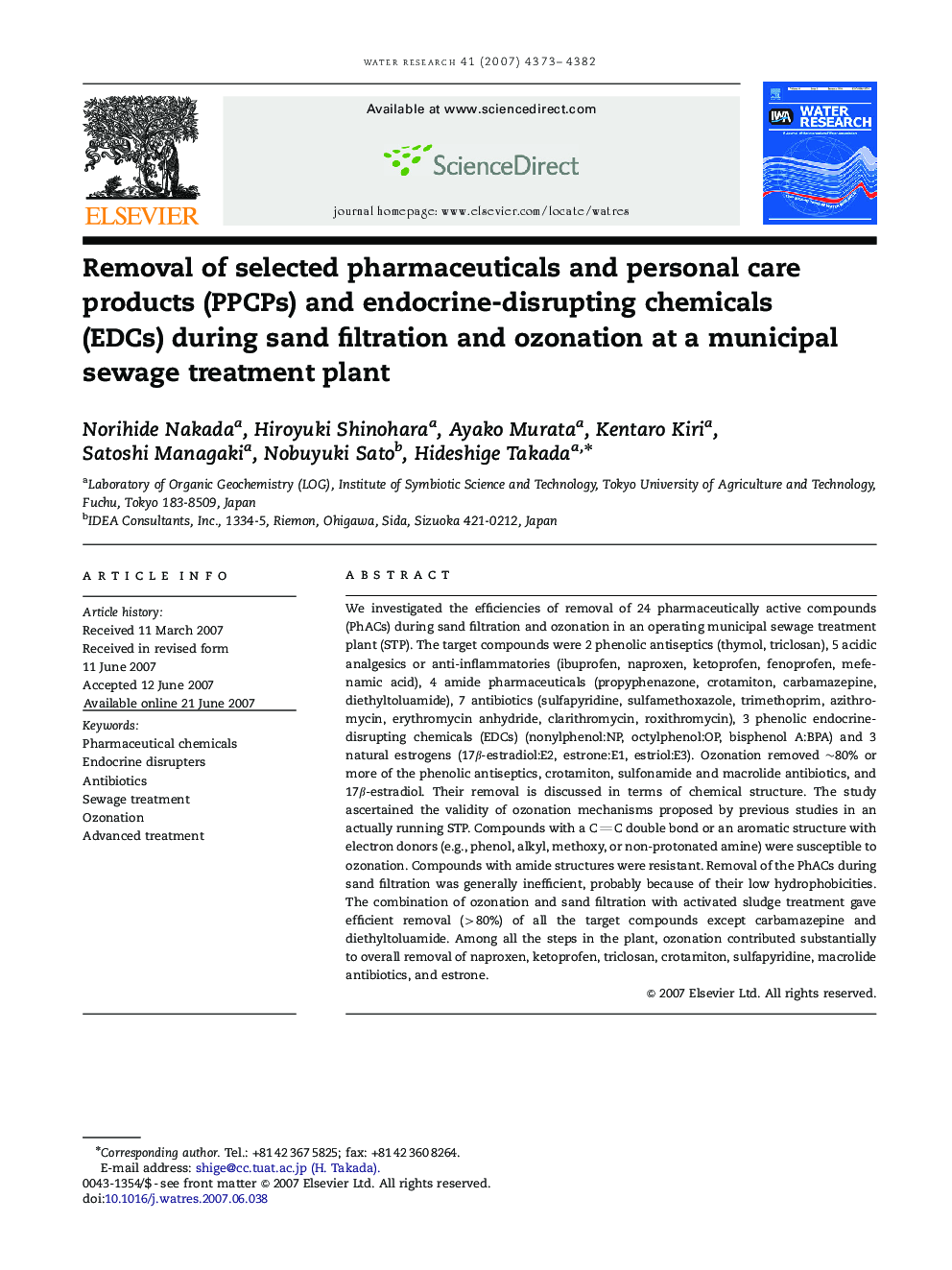| کد مقاله | کد نشریه | سال انتشار | مقاله انگلیسی | نسخه تمام متن |
|---|---|---|---|---|
| 4485248 | 1316946 | 2007 | 10 صفحه PDF | دانلود رایگان |

We investigated the efficiencies of removal of 24 pharmaceutically active compounds (PhACs) during sand filtration and ozonation in an operating municipal sewage treatment plant (STP). The target compounds were 2 phenolic antiseptics (thymol, triclosan), 5 acidic analgesics or anti-inflammatories (ibuprofen, naproxen, ketoprofen, fenoprofen, mefenamic acid), 4 amide pharmaceuticals (propyphenazone, crotamiton, carbamazepine, diethyltoluamide), 7 antibiotics (sulfapyridine, sulfamethoxazole, trimethoprim, azithromycin, erythromycin anhydride, clarithromycin, roxithromycin), 3 phenolic endocrine-disrupting chemicals (EDCs) (nonylphenol:NP, octylphenol:OP, bisphenol A:BPA) and 3 natural estrogens (17β-estradiol:E2, estrone:E1, estriol:E3). Ozonation removed ∼80% or more of the phenolic antiseptics, crotamiton, sulfonamide and macrolide antibiotics, and 17β-estradiol. Their removal is discussed in terms of chemical structure. The study ascertained the validity of ozonation mechanisms proposed by previous studies in an actually running STP. Compounds with a CC double bond or an aromatic structure with electron donors (e.g., phenol, alkyl, methoxy, or non-protonated amine) were susceptible to ozonation. Compounds with amide structures were resistant. Removal of the PhACs during sand filtration was generally inefficient, probably because of their low hydrophobicities. The combination of ozonation and sand filtration with activated sludge treatment gave efficient removal (>80%) of all the target compounds except carbamazepine and diethyltoluamide. Among all the steps in the plant, ozonation contributed substantially to overall removal of naproxen, ketoprofen, triclosan, crotamiton, sulfapyridine, macrolide antibiotics, and estrone.
Journal: Water Research - Volume 41, Issue 19, November 2007, Pages 4373–4382